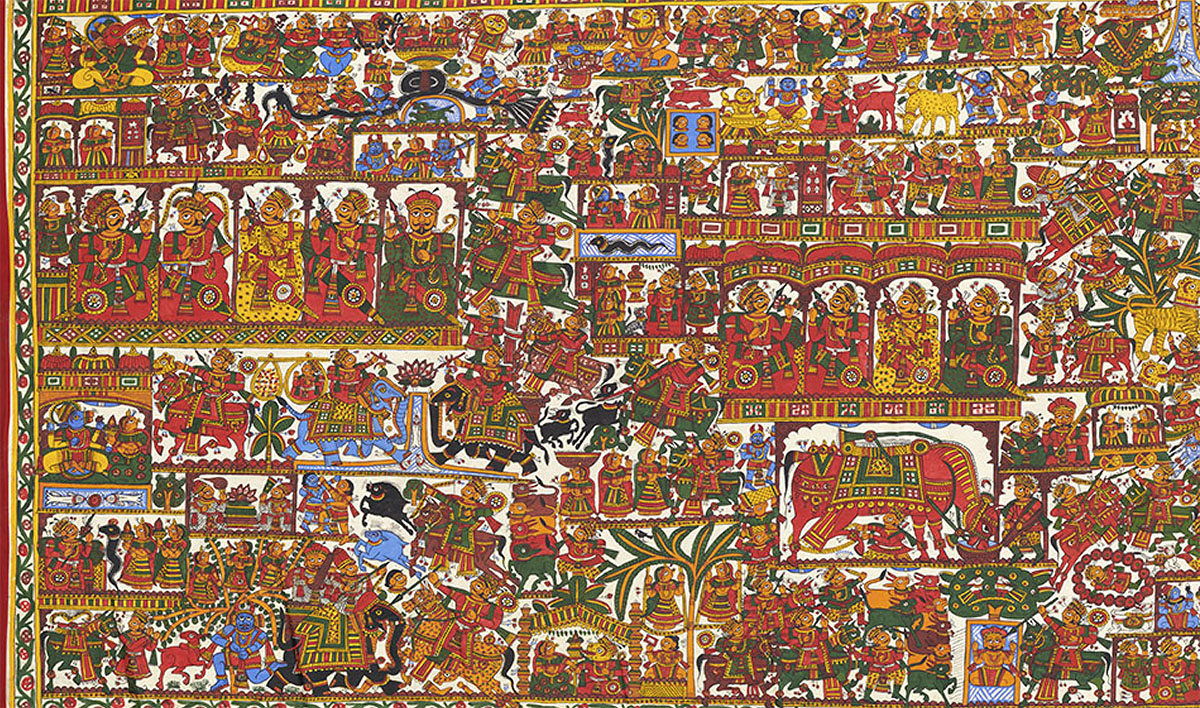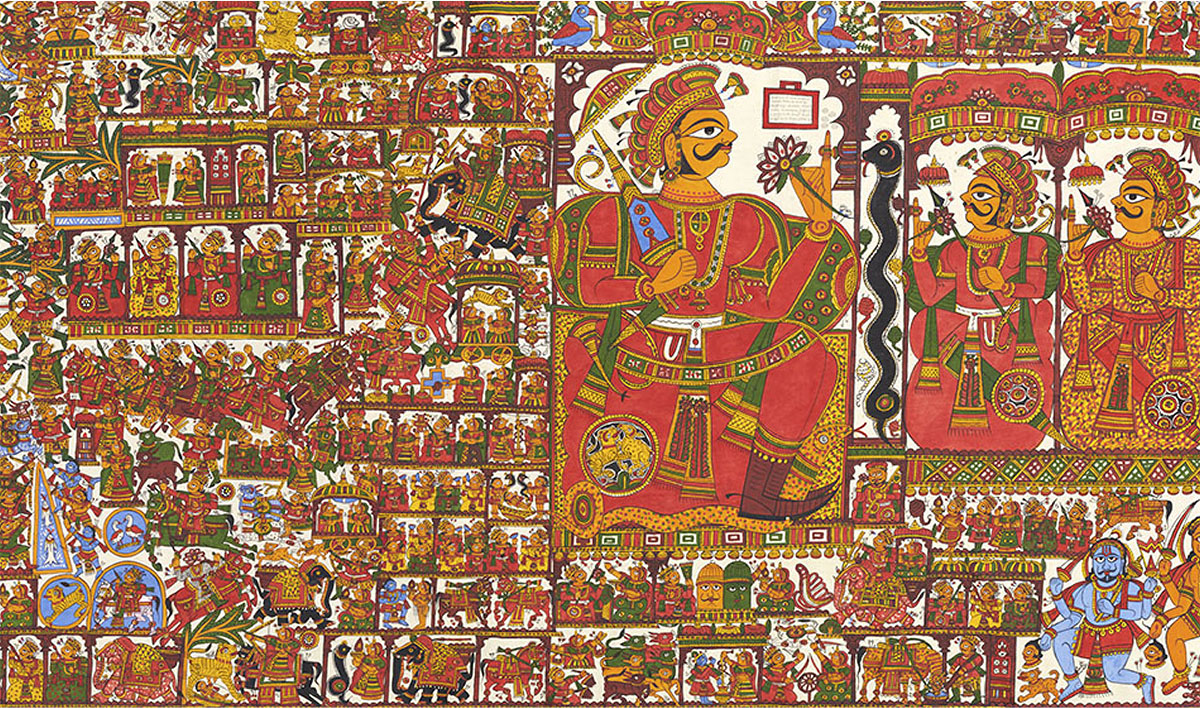ARTICLE
Phad Painting
A form of scroll painting from the Mewar region of Rajasthan, Phad painting chronicles the stories of local folk heroes and deities (or bhomiya), such as Ramdevji from the Meghwal and Regar castes, Devnarayanji or Devji from the Gujjar community and Pabuji from the Rabari community. Historically, these painted cloth scrolls were used during performances of the stories by travelling Rabari priests and priestesses, locally known as bhopas and bhopis, who would commission artisans to illustrate them.
Phad painting is believed to have originated in Shahpura in the fourteenth century, where it was practised exclusively by members of the Chhipa caste. This was also the period around which the local folk stories, or veergatha, documented by these scrolls first emerged. Stories of notable Rajput kings were also painted, although this was comparatively rare.
Phad paintings are traditionally large, ranging from five to thirty five feet in length. The base of the painting is made of coarse cotton cloth or khadi. The cloth is soaked in water overnight, then dried and treated with primer, after which it is burnished with a stone, usually by male artisans. The primer is a mixture of flour and gum boiled in water. The pigments are traditionally prepared by women and derived from naturally occurring minerals. The artisan makes a rough plan of the painting in yellow, and fills in more colours once the composition is ready. The pigments are applied to the cloth with a medium made of kheriya gond, a local gum. The gum and the burnished surface are the main reasons for the longevity and vibrancy of Phad paintings.
The style uses a flat perspective and bright colours. Each painting is framed by black and white borders composed of intricate floral patterns, while the edges of the cloth itself are always red. Human figures are depicted frontally, although their faces are shown in profile. These figures are painted in orange, with jewellery and clothing in red, yellow, blue and green. The bhomiya of the story is placed in the centre of the composition, sometimes with a companion. The veergatha is painted around him, either in part or full, and while this is not necessarily composed in a linear manner, the scenes are usually arranged horizontally and divided into panels with thin borders of vines. The painting is concluded by drawing a pupil in the eye of the central figure: a gesture that symbolically brings it to life. Phad paintings are considered sacred and scrolls that have suffered extensive wear and tear are disposed of through ritual immersion in the Pushkar lake.
The bhopa and bhopi traditionally perform through the night: the bhopi uses a lamp to highlight different scenes in the painting and plays a two-string instrument called the ravanhatta, while the bhopa narrates the story. The performance, also called phad baanchna (“reading of the phad”), was historically commissioned as a religious service and each painted scroll was treated as a shrine. The ceremony traditionally began with a series of purification rituals in the performance area as well as an arti to the bhomiya central to the Phad painting.
In 1960, notable Phad artisan Shree Lal Joshi founded the Joshi Kala Kunj (now renamed Chitrashala) in Bhilwara, where people from any community could enrol and learn Phad painting. The historical system of commissioning has also changed in recent years, with artisans preemptively preparing paintings of standard scenes such as royal hunts or religious imagery.
While only a few artisans make Phad paintings professionally today, many hobbyists have embraced it and continue to follow the traditional methods of making the paintings. The religious performances associated with these scroll paintings, however, are rarely practised now. Recently, other deities from Hinduism, such as Ram and Krishna, have also been featured prominently in Phad paintings in a bid to draw in a wider audience. With commercial buyers in mind, artisans have also scaled the scrolls down to two to six feet in length.
Bibliography
Our website is currently undergoing maintenance and re-design, due to which we have had to take down some of our bibliographies. While these will be re-published shortly, you can request references for specific articles by writing to hellomapacademy@map-india.org.









